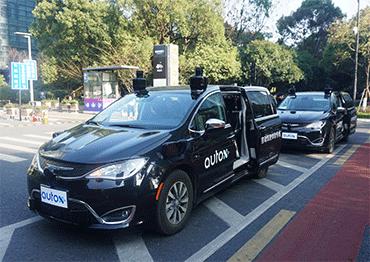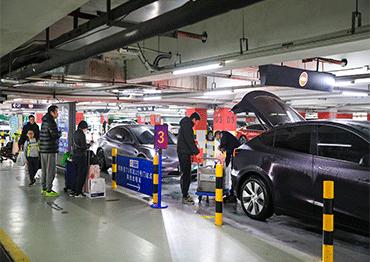Chen Long gets up at around 4 pm to start his long night. Supporting a family of five, he has worked 15 to 16 hours a day since losing his white-collar job last year. The Beijinger in his 50s said he earns about 600 yuan (US$83) a day, with peak earnings coming in the early morning hours with rides from the city’s nightlife areas.
Ride-hailing has been one of the most common options for laid-off workers. However since May 2023, several cities such as Shanghai and Changsha, Hunan Province have halted issuing new licenses for ride-hailing vehicles.
In China, there is a three-tier approval process for drivers: a ride-hailing operator permit, vehicle permit and special driver license from the city, according to the 2022 amendment.
Each comes with strict requirements and threatens hefty fines. This forces unlicensed ride-hailing drivers, like Li Qiang in Beijing, to find ways around traffic police.
A former window washer for the city’s high-rises, Li turned to ride-hailing after work dried up. Li is on the road 12 to 13 hours a day and brings in about 300 yuan (US$41).
When Li was caught without the right paperwork, traffic police slapped him with a 7,000 yuan (US$967) fine. Luckily, the ride-hailing platform covered it. His son has since created a map to help Li circumvent regular police checkpoints.
The reluctance to issue new ridesharing licenses is reflected nationwide. According to data from the Ministry of Transport (MOT), a total of 7.033 million ride-hailing driver certificates and 2.948 million vehicle transportation certificates were issued as of May 31, reflecting a meager month-on-month increase of 1.0 and 0.7 percent.
DiDi remains the most popular platform for drivers, despite its stringent rules that are increasingly pushing unqualified drivers to smaller platforms, said Yang Xu, an EV salesman in Beijing whose company rents cars to rideshare drivers.
Among them, more than 100 of these smaller platforms belong to Gaode Jiaoche, a subsidiary of Beijing-based mapping and traffic data firm AutoNavi (Amap), which Alibaba Group acquired in 2014 for US$1.5 billion.
Industry investor Guo Tao told NewsChina that the consistently low profitability of ride-hailing platforms, exacerbated by numerous discount coupons and costly marketing schemes, hit drivers hardest.
“A group ride shared by three people is charged the same as a single passenger fare,” said Li, who added he hands over 27 percent of his income to a smaller platform. Last April, the MOT capped platform commissions at 30 percent.
Qiao also accused platforms of bait-and-switch orders, where fare types with different commission rates can be reclassified automatically without the driver’s knowledge, leading to discrepancies between displayed and actual payments.
As a result, smaller platforms that operate under aggregators like Amap can collect higher commissions from drivers to offset the increasing charges from their parent companies. According to Qiao, these rates can sometimes reach as high as 50 percent.
Smaller apps have become increasingly dependent on aggregation platforms for market penetration. For example, Caocao, the third-largest ride-hailing app, has seen its gross transaction value (GTV, a metric to evaluate the transaction volume in a specific period) from third-party aggregation platforms grow significantly from 43.8 to 73.2 percent between 2021 and 2023, according to its company prospectus from April 29.
Meanwhile, “By creating access to numerous drivers and subsidiaries without scrutinizing their qualifications, giant platforms like Amap have aroused significant concerns over the safety and quality provided by ride-hailing services,” Huatai Securities warned.

 Old Version
Old Version


